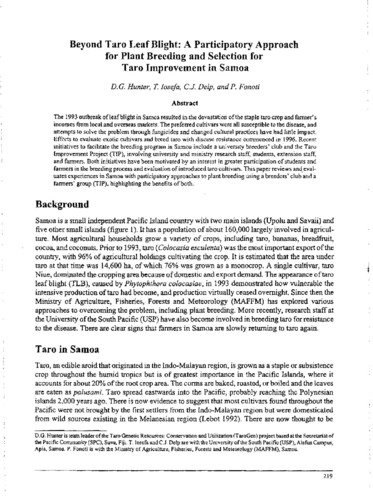Alternativas para el control de enfermedades en yuca
The different alternatives for disease control in cassava, registered as efficient and considered as possible candidates for inclusion in technological packages for cassava cultivation, are summarized. Certain specific characteristics of cassava and its cultivation that should be considered when developing and applying control measures are listed. Successful cultural control measures are crop rotation, planting in furrows, elimination of crop residues, adequate spacing between plants, selection of planting material, weed control, and solarization. Although genetic (varietal) disease control in cassava is the most efficient and less expensive method for farmers, the process of developing improved clones can take 10 yr or longer of continuous evaluation. Var. resistance to all cassava diseases studied has been found. Since the commercial cycle of cassava is relatively long (8-24 mo.), chemical disease and pest control is uneconomical; furthermore, cassava farmers generally have low incomes and the use of agrochemicals is limited. However, preplanting treatment of cuttings has had excellent results. Biological disease control is relatively recent, but good results have been obtained with Darluca filum in Uromyces, Pseudomonas putida in CBB and superelongation, and bacterias in Diploidia manihotis. Pathogens have also been eradicated by physical means such as heat treatment (witches' broom, common mosaic, Caribbean mosaic, frog skin) and microwaves (fungi and bacterias affecting the seed). The importance of quarantine measures for the movement of cassava propagation materials is highlighted. (CIAT)

